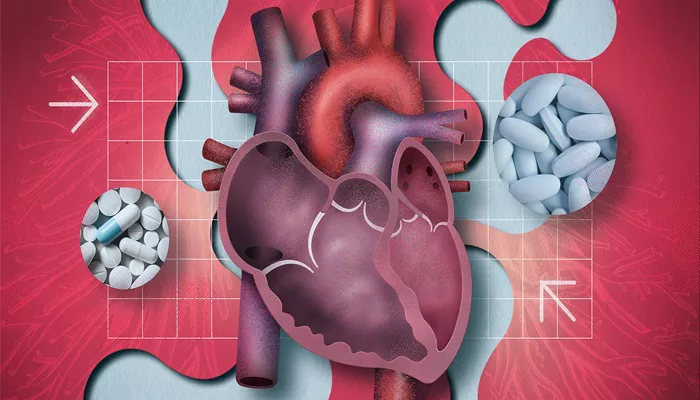Heart failure is a complex and often chronic condition that affects millions of people worldwide. Characterized by the heart’s inability to pump blood effectively, it can lead to a range of symptoms, including shortness of breath, fatigue, and fluid retention. Given the severity and impact of heart failure, understanding the first-line treatment options is crucial for managing this condition effectively. In this comprehensive article, we’ll explore the primary treatment strategies, including lifestyle changes, medications, and other interventions.
Understanding Heart Failure
Before diving into treatment options, it’s essential to understand what heart failure is and how it affects the body. Heart failure occurs when the heart muscle becomes weakened or stiff, impairing its ability to fill with blood or pump it to the rest of the body. This can result from various conditions, including coronary artery disease, high blood pressure, and previous heart attacks.
Heart failure can be classified into different types based on which part of the heart is affected and the nature of the impairment. The two primary types are:
Heart Failure with Reduced Ejection Fraction (HFrEF): The heart’s left ventricle does not contract effectively, leading to a reduced amount of blood being pumped out with each heartbeat.
Heart Failure with Preserved Ejection Fraction (HFpEF): The heart muscle is stiff and does not relax properly, preventing the heart from filling with enough blood.
First-Line Treatment Strategies
The management of heart failure is multi-faceted and tailored to each individual’s specific needs. However, several key treatment strategies are considered first-line for most patients. These include lifestyle modifications, pharmacologic therapies, and in some cases, device-based therapies.
SEE ALSO: What Activities Should Be Avoided with Heart Failure?
1. Lifestyle Modifications
Dietary Changes: A low-sodium diet is crucial for managing heart failure. Sodium can cause fluid retention, exacerbating symptoms.
Patients are advised to reduce their salt intake and consume a diet rich in fruits, vegetables, and whole grains.
Fluid Restriction: In some cases, limiting fluid intake may be necessary to prevent fluid buildup and reduce symptoms such as swelling and shortness of breath.
Exercise: Regular, moderate exercise can improve heart function and overall fitness. Patients should work with their healthcare providers to develop a safe exercise plan.
Weight Management: Maintaining a healthy weight is important, as excess weight can put additional strain on the heart.
Weight management strategies should be tailored to the individual’s needs and health status.
Smoking Cessation and Alcohol Reduction: Smoking and excessive alcohol intake can worsen heart failure. Quitting smoking and moderating alcohol consumption can help improve heart health.
2. Medications
Angiotensin-Converting Enzyme (ACE) Inhibitors: ACE inhibitors, such as enalapril and lisinopril, are cornerstone medications for heart failure. They help relax blood vessels, reduce the workload on the heart, and improve symptoms.
Angiotensin II Receptor Blockers (ARBs): For patients who cannot tolerate ACE inhibitors, ARBs like losartan or valsartan can be used.
They offer similar benefits in reducing blood pressure and alleviating symptoms.
Beta-Blockers: Medications such as metoprolol and carvedilol are used to reduce heart rate and blood pressure, decrease the heart’s workload, and improve heart function over time.
Diuretics: Diuretics like furosemide help remove excess fluid from the body, reducing symptoms such as swelling and shortness of breath.
They are particularly useful for patients with fluid retention.
Mineralocorticoid Receptor Antagonists (MRAs): Spironolactone and eplerenone are MRAs that help reduce fluid buildup and prevent the progression of heart failure by blocking aldosterone, a hormone that promotes fluid retention.
SGLT2 Inhibitors: A newer class of drugs, including empagliflozin and dapagliflozin, has shown promise in improving outcomes for heart failure patients, particularly those with diabetes.
3. Device-Based Therapies
Implantable Cardioverter-Defibrillators (ICDs): For patients at high risk of life-threatening arrhythmias, ICDs can be implanted to monitor and correct abnormal heart rhythms.
Cardiac Resynchronization Therapy (CRT): CRT involves the implantation of a specialized pacemaker to improve the coordination of the heart’s contractions, particularly in patients with HFrEF who have a specific type of electrical conduction issue.
Advanced Therapies and Considerations
In some cases, when standard treatments are not sufficient, advanced therapies may be considered. These include:
Heart Transplant: For patients with severe, end-stage heart failure, a heart transplant may be the only option. This involves replacing the damaged heart with a healthy donor heart.
Left Ventricular Assist Devices (LVADs): LVADs are mechanical pumps used to he
lp the heart pump blood in patients awaiting a heart transplant or those who are not candidates for a transplant.
Conclusion
The first-line treatment for heart failure involves a combination of lifestyle modifications, medications, and, in some cases, device-based therapies. Each patient’s treatment plan should be personalized, considering their specific type of heart failure, overall health, and response to initial therapies. By following a comprehensive approach, individuals with heart failure can manage their symptoms more effectively and improve their quality of life.

